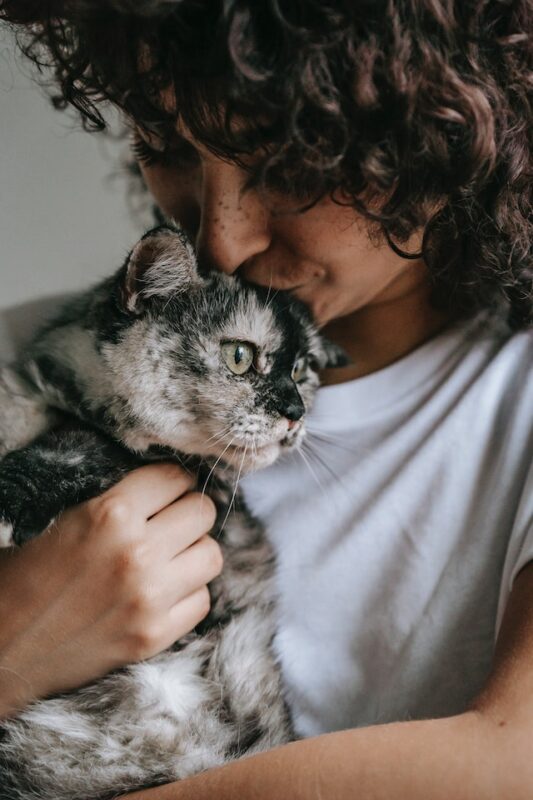How to Pick the Best Pet Insurance
Posted: 09/08/2022 | BY: Jenna Bruce | Categories: Pet care , Top Tips
Your pet is a loved one; a part of your family that just happens to be a little shorter and harrier than everyone else. And just like your other family members, you want to ensure you are financially prepared should your fur baby become ill or injured. Pet insurance plans provide that assurance and protect the health of your pet, and the health of your savings account, should an emergency arise.
While having pet insurance coverage can bring you peace of mind, determining which insurance plan is the right one for you can feel daunting and confusing. What level of coverage do you need? What inclusions make the most sense? Does the policy make payments or will you be reimbursed after you’ve made upfront payments?
The time it can take to find answers to these questions is significant, so we’ve put together this guide to help your selection process be as simple as possible.
Let’s get started!

What Does Pet Insurance Cover?
A pet insurance company will typically offer a variety of coverage options, but the following are the most common:
Accident-Only Coverage
As the name implies, accident-only policies generally cover the costs of any diagnostics and medical treatments required should your fur baby be involved in some sort of accident. This could mean being hit by a car, attacked by another dog, or ingesting something toxic.
Accident and Illness Coverage
Accident and illness policies are more comprehensive and cover everything an accident-only policy covers, plus costs associated with the treatment of any illness (so long as its not a pre-existing illness).
Wellness Plans
Wellness plans can be purchased on their own, but most pet parents add these policies onto existing policies to help cover the costs of things like dental exams, vaccinations, etc.
Is Insurance Really Necessary?

Well that depends. Would you be able to comfortably pay thousands, or even tens of thousands of dollars, to save (or extend) your fur baby’s life? Most people simply can’t answer “yes” to that question.
A good rule of thumb we tell our customers is – if you can comfortably afford monthly premiums and your pet is relatively healthy, and you wouldn’t be able to afford tens of thousands of dollars in vet bills, then you should definitely get pet insurance. A good plan means you won’t be expected to pay exorbitant out-of-pocket expenses or make the heartbreaking decision of saying goodbye to your loved one simply because you couldn’t afford their care.
Before moving on, it’s important to understand what “’relatively healthy” means in this scenario. You can and absolutely should get pet insurance even if your baby isn’t very young or has had some minor illnesses in the past, or is dealing with a manageable condition currently.
Where it gets a bit fuzzy is when you have a senior pet who has or is already dealing with serious health problems such as cancer or loss of mobility. You may not get as much value from starting a new plan since preexisting conditions are not covered. Preexisting conditions are not necessarily diagnoses, but rather symptoms exhibited by your pet that are associated with life-threatening conditions such as heart failure or hip dysplasia. Depending on your plan, it will cover issues not related to the preexisting condition. If you have any questions or concerns about preexisting conditions, it is always a good idea to talk about them with your veterinarian.
The Problem with Self-Insuring
Many pet parents are tempted to self-insure, meaning they set aside money each month for potential future medical emergencies. Depending on how much they are able to set aside, a single trip to the ER clinic could completely wipe out a year’s worth of savings and may not even cover the entire bill.
Saving money can work well for predictable expenses but the thing with medical emergencies is, they are unpredictable. But setting money aside each month for a pet insurance plan will bring you peace of mind knowing you can face whatever the future throws your way and afford to give your beloved fur baby the care they need.
Choosing the Best Pet Insurance Plan

The following are some steps and considerations when choosing a pet insurance plan for your loved one:
Your Pet’s Age
How old is your pet? While pet insurance can help in most scenarios, it is best to get your pet on a plan as early as possible.
How Many Pets Do You Have?
If you have more than one pet, it’s a good idea to shop around and find a multi-pet policy that offers a discount.
Be Ruthless in Your Research
Do not go with the first provider or policy you come across. It’s important that you spend a bit of time doing your research and comparing different providers against one another. Here are some main things to pay attention to:
Monthly Premiums
What is your current financial situation? How much can you afford each month to put toward pet insurance? Most providers will offer a variety of plans and premium options so it’s worth it to shop around and find the one that fits your personal budget.
Deductibles
The deductible in pet insurance works exactly as it does with human health insurance – it is the amount of money you will need to pay before your policy kicks in. Generally speaking, the higher your deductible, the lower your monthly premium will be.
Claim Reimbursements
If your policy is one in which you must pay the cost of treatment upfront and then file a reimbursement claim, how much will you receive and how long will it take to be paid? There are pet plans that will reimburse for up to 90% of the bill and will send your payment within 14 days or less of receiving your claim.
Read the Fine Print
Before signing on any dotted line, you’ll want to check the plan carefully. Does it exclude certain breeds? Are there any age restrictions? Does it cover preexisting medical conditions (many don’t). What is covered and what isn’t? When will the policy come into effect? Many plans have a waiting period of 14 – 30 days so your pet could be uninsured for up to a month.
Be Aware of Policy Inclusions and Exclusions

Many pet parents are caught off guard when it comes to what is and isn’t included in their new policy. To reduce the chances of signing up for a policy that simply does not meet your pet’s needs, here are things you’ll want to look into further:
- Vet exam fees
- Surgery
- Hospital care/overnight stays
- Cancer treatment
- Prescription medications
- X-rays and blood work
- Holistic therapies
- Euthanasia and cremation
- Non-routine dental procedures
As mentioned earlier, many pet parents choose to purchase a wellness plan on top of their primary plan to help cover the cost of some of the above expenses.
Choose a Well-Established Provider
There are currently close to 30 national pet insurance providers and that number continues to grow each year. It can be tempting to go with a smaller provider that has just entered the market as they may offer cheaper plans. But going with smaller startups is not always a good idea as they may not handle claims in a timely manner or could end up going out of business. We always recommend going with a well-established provider.
Some really good pet insurance companies that are well-stablished and highly rated include:
- ASPCA
- Trupanion
- Lemonade
- Fetch
- PetsBest
- Embrace
- Healthy Paws
You can check out how our customers have ranked the above providers and more here.
Final Thoughts
We hope you have a better understanding of the process of choosing a pet health insurance plan. To make the process even easier, we’ve gone ahead and partnered with the top pet insurance companies in the marketplace. We’ve also created a simple way for you to conduct side-by-side comparisons to make the decision process even easier.
We’re pet parents who believe taking the very best care of our fur babies should be a top priority and affordable. Get a free pet insurance quote today.
DisclaimerThe information contained on this blog is intended for informational and educational purposes only and should not be construed as medical advice. It is not a substitute for professional veterinary care. Always consult with your veterinarian before making any changes to your pet's health care or treatment plan.
The authors of this blog are not veterinarians and do not claim to be experts in pet health. The information provided here is based on our own experiences and research, as well as information from reputable sources. However, we cannot guarantee the accuracy or completeness of this information.
We encourage you to do your own research and consult with your veterinarian before making any decisions about your pet's health.
Previous post
Bad Breath in Dogs: Causes and TreatmentCompare top pet insurance providers & plans.
Enter your dog’s age in years and months to calculate their age equivalent to human years.
Calculate your dog’s ageEnter your cat’s age in years and months to calculate their age equivalent to human years.
Calculate your cat’s age